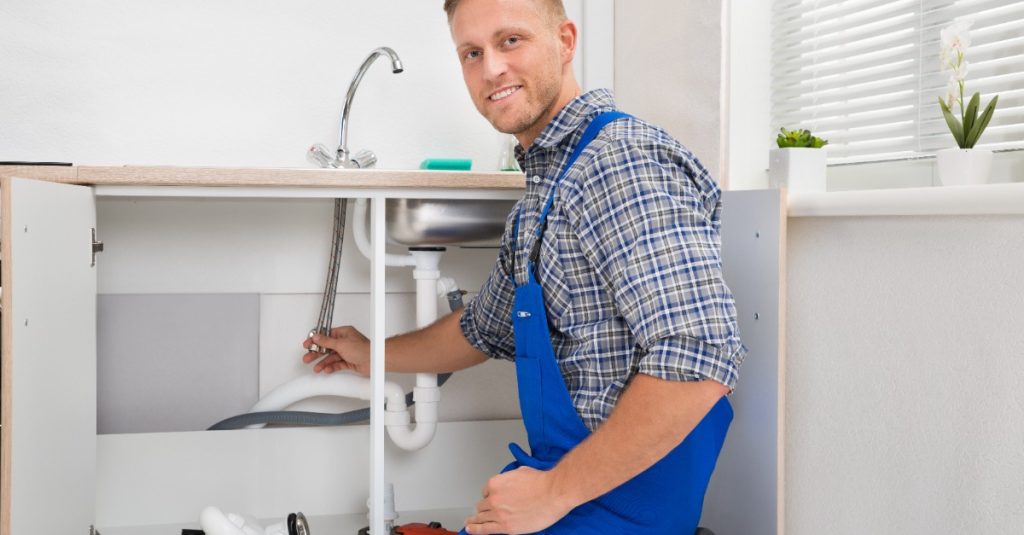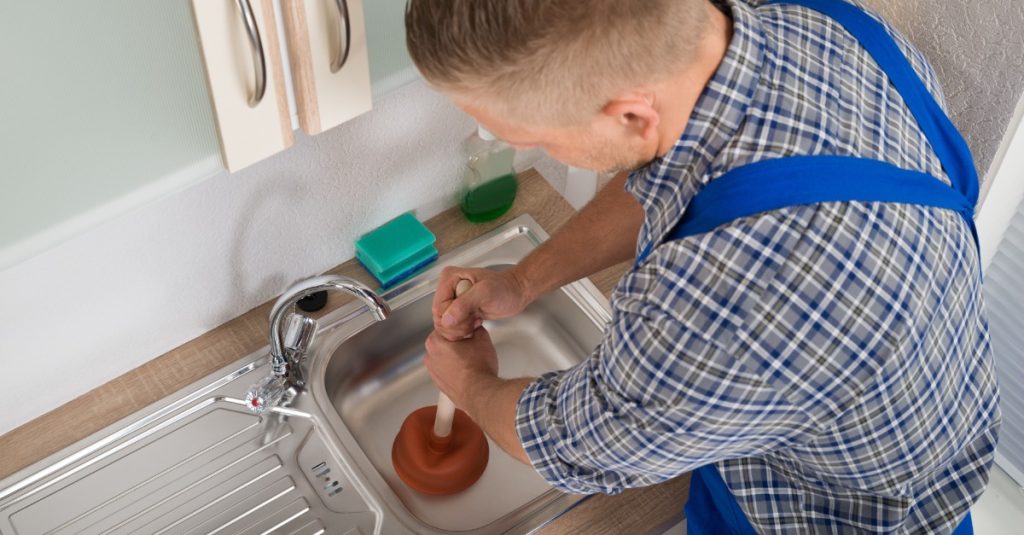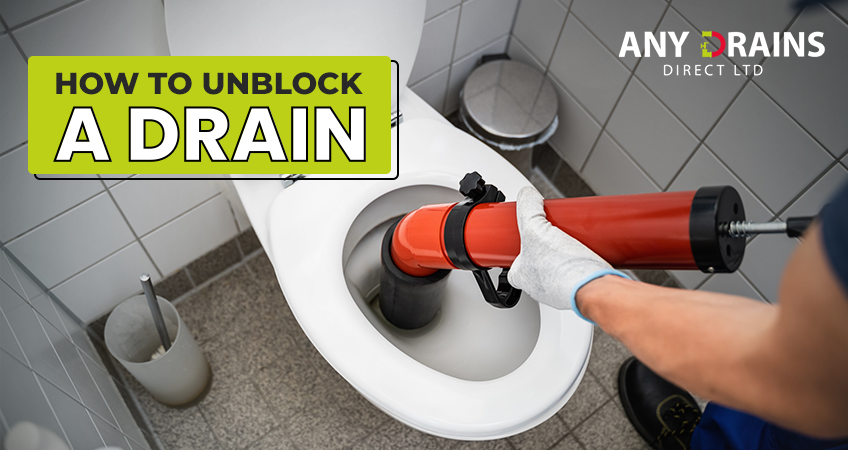A clogged drain is an all-too-common reason for homeowners to seek the help of a plumber.
The issues associated with blocked drains, such as unpleasant smells and pooling water, may seem minor at first. However, if left unaddressed, these problems can escalate and wreak havoc on your daily life.
Thankfully, if you believe you have a clogged drain, there’s a chance you can remedy the situation on your own.
In this post we will start by looking at what can block a drain in the first place, then how to tell if your drain is blocked, and we’ll finish with a step-by-step guide on how to clear the blockage once and for all.
With our guidance, you’ll have everything running seamlessly in no time.
So let’s begin!
What can cause a drain blockage?
As a homeowner, it’s crucial to be aware of the proper ways to use your drains. Despite our best efforts, however, mistakes can happen and daily usage can sometimes lead to clogged drains.
Here are the main culprits in blocked drain disasters
Cooking oil
Disposing of cooking oil by pouring it down the sink is a big no-no. The oil’s thick consistency prevents it from flowing freely, making it more likely to accumulate along with food debris and cause a clog.
Buildup of minerals
The accumulation of minerals like calcium in your pipes can lead to constriction. Although this might not create an immediate blockage, it certainly paves the way for other blockages to form more easily.
Toiletry items
Even though toiletries are an essential part of our daily routine, certain items can lead to drain blockages. For instance, nappies, baby wipes, and hygiene products should never be flushed down the toilet, as they can accumulate and create a block.
Foreign objects
If you have children, there’s always a risk that they could flush an object down the toilet that doesn’t belong there. Toys and other foreign items can become stuck in the u-bend and cause a blockage.
Food scraps
Similar to cooking oil, food scraps should never be disposed of in your drainage system. Pay special attention to coffee grounds, as they are notorious for causing drain blockages.
Soap
While liquid soap isn’t likely to cause blocked drains, solid soap bars pose a risk when they get trapped within the pipes. Over time, they may break down and cause a blockage. To prevent this from happening, consider using a mesh wire guard to cover plug holes, or opt for liquid soap instead.
Tree roots
While tree roots may not be a concern for small-scale local drain blockages, they can significantly impact your primary sewage system. As the roots grow, they penetrate the pipes and eventually create a blockage, disrupting the smooth flow of waste.
Hair and pet fur
When you wash your hair or give your pet a bath, the hair and fur can attach itself to the inside of the pipes. With time, this buildup can lead to blocked drains. To prevent this you should brush your hair before washing it and dispose of the loose hair in the bin, not down the toilet! Similarly, it’s always best to give your beloved four-legged companion a rinse down in the great outdoors rather than in your bath.
Outdoor natural debris in the gutter
Our outdoor drains are consistently exposed to an array of natural debris, especially when gutter guards are not in place. Leaves, twigs, and even dirt or grit can accumulate in your drains, eventually causing blockages.
Understanding the causes of blocked drains is essential for homeowners to take preventive measures and maintain a well-functioning drainage system.
Now, let’s find out if you have a drain blockage on your property.
Identifying the Symptoms of a Clogged Drain

Blocked drains can result in damage to your property and pose health risks for both people and pets.
Be on the lookout for these early warning signs of a problematic drain:
1. Water overflowing
You likely expect water to flow smoothly down your drain, so it can be quite concerning when it begins to back up and spill over. An overflowing drain typically signifies a blockage at work.
2. Unpleasant odour
One of the first indicators of a blocked drain is an unexpected and unpleasant smell. This scent often resembles sewage and might cause you to second-guess whether or not someone remembered to flush the toilet.
Other signs to watch out for include:
3. Gurgling noises
If you hear gurgling sounds coming from your drain, this suggests that water is pooling and pressing against the pipe’s walls. A blockage is likely the culprit in such cases.
4. Slow drainage
You may start to observe that water takes longer to drain from your sink or shower than usual. In most instances, this problem tends to worsen over time as the blockage continues to grow larger.
If you’re experiencing any of these issues, it’s highly likely that your drain is blocked. But fret not, here’s a complete guide on how to unblock it.
How to unblock a drain using household items

Step-by-step guide on how to unblock a drain using household items
1.Collect necessary items
Start by gathering all the necessary materials. You’ll need a plunger, wire hanger, rubber gloves, white vinegar, baking soda (bicarbonate of soda) and a bucket. If you can’t find a wire hanger, you can use a straightened metal coat hanger instead.
2.Prepare the area
Before you begin, put on the rubber gloves and clear the area around the sink or drain. Make sure you have easy access to the drain and have placed the bucket underneath to catch any water or debris.
3.Use the plunger
Next, try using a plunger to dislodge the blockage. Place the plunger over the drain and push down gently, then pull up sharply to disturb and ideally clear the blockage. Repeat this process a few times.
4.Utilise a wire hanger
If the plunger isn’t effective, use a wire or coat hanger. Straighten the hanger, leaving a small hook at one end. Push it down the drain, then pull it up again to hook and pull out any debris.
5.Try a vinegar and baking soda mixture
If all else fails, you can try using a mixture of vinegar and baking soda. Boil a pot of water and add 120ml of vinegar and one tablespoon of baking soda. Let this sit for about five minutes before pouring it down the drain.
6.Flush with hot water
Once you’ve removed as much of the blockage as possible, flush the drain with hot water to clear any remaining debris. If the water drains away quickly, this indicates that the blockage has been successfully cleared.
7.Repeat if necessary
If the water still isn’t draining properly, you may need to repeat the process. Remember, it might take a few attempts to completely clear the drain.
Remember, if the blockage remains after several attempts, it might be time to call a professional plumber. Some blockages may be too stubborn or located too far down the pipe for DIY methods to be effective.
Summary
And there you have it, a comprehensive guide on how to unblock a drain using household items. With these easy steps, you can save yourself both time and money.
If you find yourself with a stubborn blockage that won’t shift by employing DIY methods, don’t hesitate to contact the team at Any Drains Direct. By utilising specialist industry tools and unblocking methods such as CCTV inspection cameras and power flushing, our team can swiftly and safely unclog your drains and keep them running smoothly. Get in touch with us today to find out more.
Hopefully this guide has been helpful in understanding the causes of blocked drains, identifying the symptoms, and teaching you how to unblock a drain using household items.
Remember, prevention is key – if you’re able to take preventative measures you’ll be much less likely to experience blocked drains in the first place. Regularly checking and cleaning your pipes can also help to keep blockages at bay.
 01732 667 688
01732 667 688


